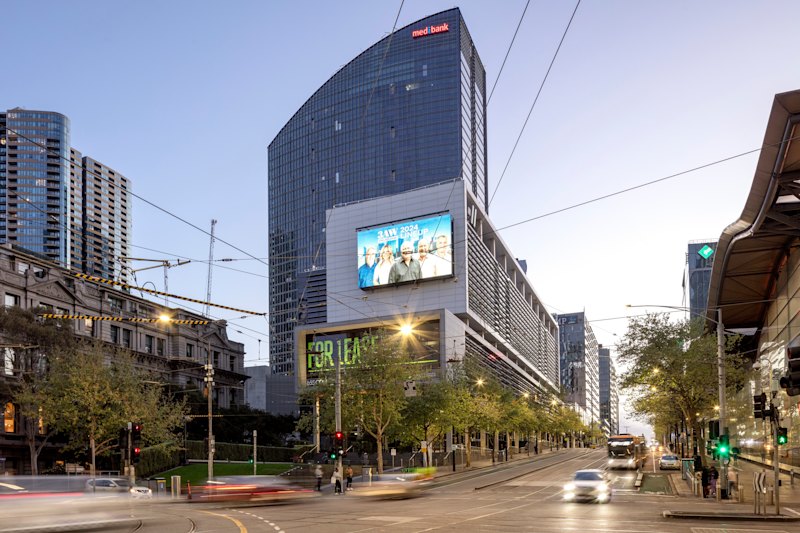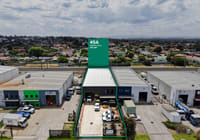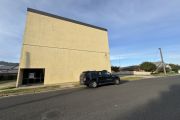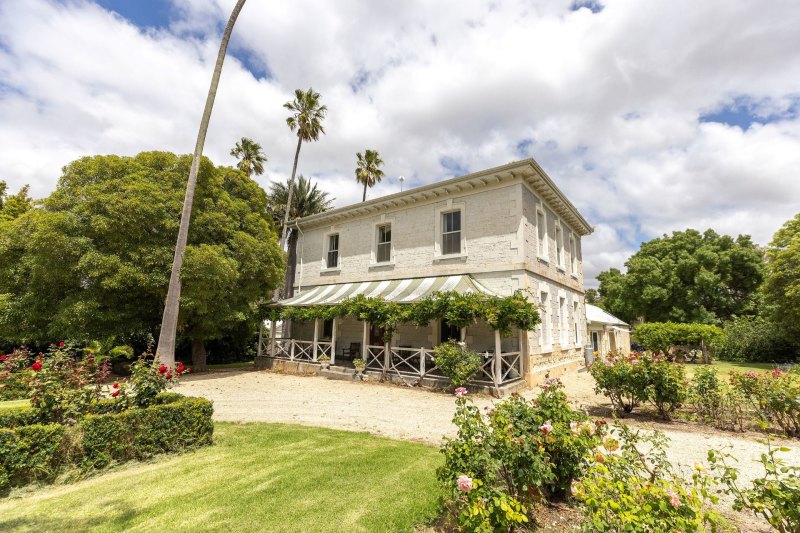
SA livestock farm with historic homestead fetches $28m
Veteran beef cattle breeders Ian and Louise Johnson have acquired a slice of South Australian farming history after emerging as the buyers of the Crower and Fellwood grazing aggregation south-west of Lucindale.
The 1870-hectare beef, prime lamb and wool powerhouse, about 350 kilometres south-east of Adelaide on the Limestone Coast, includes the stunning heritage-listed Crower homestead built in 1865 for the pastoralist brothers, John, William and Malcolm Macinnes. It was named after Crower Station, which the brothers acquired in the late 1850s alongside Baker’s Range Station.

Built at a time when the government encouraged improvements on stations, the homestead was described as a “magnificently constructed nine-roomed double-storey, slate-roofed stone homestead [with] four bedrooms … pantry, office, detached laundry and three store rooms” when it was completed.
Also still standing and in working order is an 1864-built limestone woolshed, which at its peak shore over 40,000 sheep.
The aggregation includes over 205 hectares under pivot irrigation with water sourced from a shallow underground aquifer. Facilities on Crower alongside the historic homestead include two shearing sheds, multiple cattle and undercover sheep yards. Fellwood includes a three-bedroom home, a three-bedroom cottage and a four-bedroom shearing quarter.
Crower and Fellwood were put up for sale in February by the Giles family with price expectations of $35 million. It is understood the Johnsons paid just under $28 million.
Rohan and Sue Giles, their son, Tom, and daughter Mandy, had operated the aggregation for 24 years, running it as a prime lamb and commercial beef operation.
Mr Giles died last week after a long battle with cancer.
In February, he told Adelaide newspaper The Advertiser that he and his family acquired the property in 2000 to expand their beef and lamb operation.
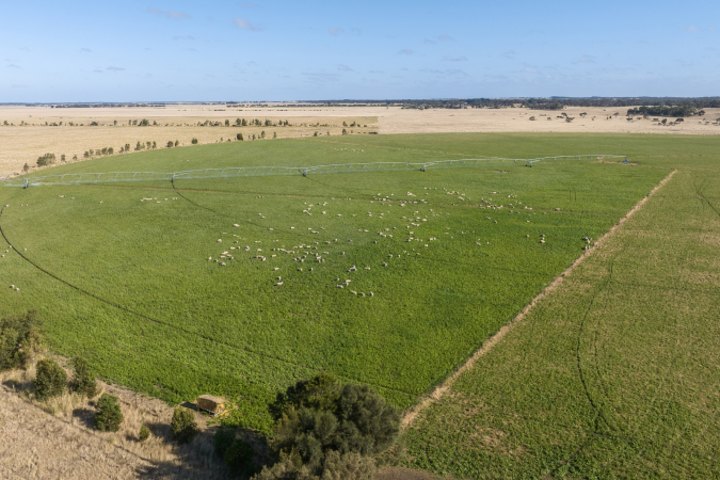
Mr Giles said good, quality underground water from the aquifer was one of the main attractions for buying Crower and Fellwood.
“That and the scale and the main house, of course, which is something else,” he said.
New owners Ian and Louise Johnson run a large Angus cattle and sheep operation across over 13,500 hectares based at Willalooka, about 85 kilometres north of Lucindale. They conduct their own cattle sales across three farms, which each have a 1000-head capacity.
Since 2003, the Johnsons have acquired about $105 million worth of farmland in the south-east (including Crower and Fellwood), property records show.
The sale of Crower and Fellwood was handled by Grant Schubert from Elders South East.
According to Elders second quarter 2024 Rural Property Market Update the performance of the South Australian market was “surprisingly strong” compared to other southern markets as property prices rose 7 per cent over the quarter and 10 per cent year-on-year to $9648 a hectare.
Over the same period, $428 million of farms changed hands, a quarter-on-quarter fall of 13 per cent, but up 13 per cent year-on-year.
“South Australia had strong volume and growth for the quarter with quality farms in tight regions moving quickly,” said Adam Chilcott, Elders state rural sales executive for South Australia.
“Buyers saw opportunities in the south-east on parcels with water entitlements and vineyards, after recent subdued demand.
“Going forward the winter crop and grazing programs are facing significant seasonal challenges statewide which may affect short-term confidence through the backend of 2024. At this stage, buyer enquiry and activity remain relatively strong, and this year may prove to be a good long-term buying opportunity,” Mr Chilcott said.
By comparison, Victoria and Tasmania recorded $212 million of sales over the second quarter, while prices fell 8 per cent on a quarterly basis and 15 per cent year-on-year to just over $13,000 a hectare.
Nationally, prices fell 2 per cent over the second quarter of the year, but are still up 5 per cent compared with a year ago.


